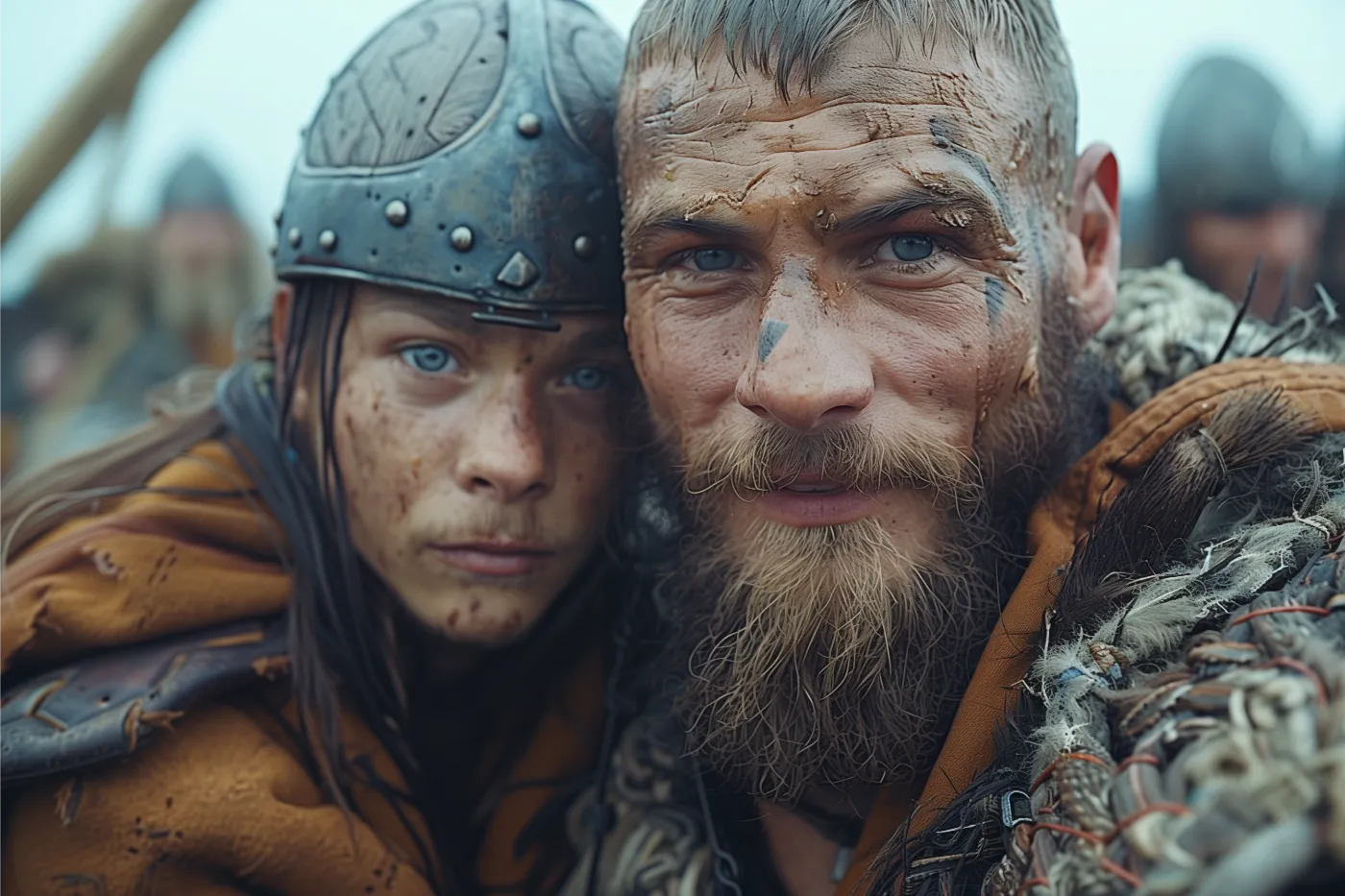The Unusual Tricks Vikings Used to Raise Their Little Warriors

Raising children in the Viking Age was no small feat. With their reputation for being fierce warriors and explorers, the Vikings had a unique set of parenting tricks to prepare their offspring for the rough and tumble life of the Norse. Let's set sail into the fascinating and sometimes surprising methods Vikings used to raise their young raiders and traders.
Strength from the Start
Viking babies were immediately tested by the harsh elements of the North. It was believed that exposing infants to cold water and brisk air would toughen them up. If a child could withstand the chill of their first winter, they were celebrated for their strength and resilience, true traits of a future Viking.
A Saga-Filled Childhood
Storytelling was the heart of Viking education. Through the epic sagas, children absorbed the deeds of gods and heroes, learning about bravery, strategy, and honor. These tales weren't just for entertainment; they were lessons in the values and expectations of Viking society, a narrative compass for the young minds.
Seafaring from the Cradle
Vikings were born sailors, and children were no exception. From a young age, they learned to navigate boats and read the stars for direction. The rolling waves were their playground, and the art of seamanship was as essential as wielding a sword for these nautical nomads.
Playtime with Purpose
Viking children didn't have action figures; they had miniature weapons and tools. Playtime was a training ground, where children honed their skills through games that mimicked adult activities. They practiced archery, wrestled, and engaged in mock battles, all in the spirit of preparing for adult responsibilities.
Household Helpers
In the Viking household, everyone had a role, including the children. From tending to animals to helping with crafts, children contributed to the family's livelihood. This hands-on approach taught them the value of hard work and self-sufficiency, key traits for surviving and thriving in the Viking world.
Celebrating Coming of Age
Vikings marked the transition from childhood to adulthood with significant rituals. A boy might receive his first sword, a symbol of his readiness to join the ranks of warriors, while a girl could be given responsibilities that signified her status as a woman of the house, such as managing the keys to the food stores.
Lessons in Law and Lore
Vikings had a complex legal system and a rich tradition of lore. Children were taught the laws of the land and the importance of upholding them. They also learned about their heritage, the myths, and the legends that shaped their identity and connection to the Norse gods.
Apprenticeship and Artisanship
As they grew, Viking children often became apprentices, learning trades and crafts that would serve them in adulthood. Whether it was blacksmithing, shipbuilding, or weaving, these skills were passed down from generation to generation, ensuring the continuation of Viking craftsmanship.
The Shieldmaiden's Path
Viking girls were not just domestic caretakers; they were also trained in the art of combat. The legendary shieldmaidens were a testament to the society's view of strong, independent women. Girls learned to defend themselves and their homes, standing equal to men in the face of danger.
Ties to the Land and Sea
Vikings had a profound respect for nature, and this reverence was instilled in their children. They were taught to read the weather, understand the seasons, and respect the land and sea that provided for them. This connection to the environment was a fundamental part of their upbringing.
These Viking parenting tricks and tips paint a picture of a society deeply connected to its environment, values, and community. The children raised in this world were not just learning to survive; they were learning to live and breathe the Viking spirit, ready to explore and conquer whatever lay beyond the horizon. Share this with friends who fancy themselves as modern-day Vikings, or anyone who appreciates the wild and adventurous spirit of the Norse!
